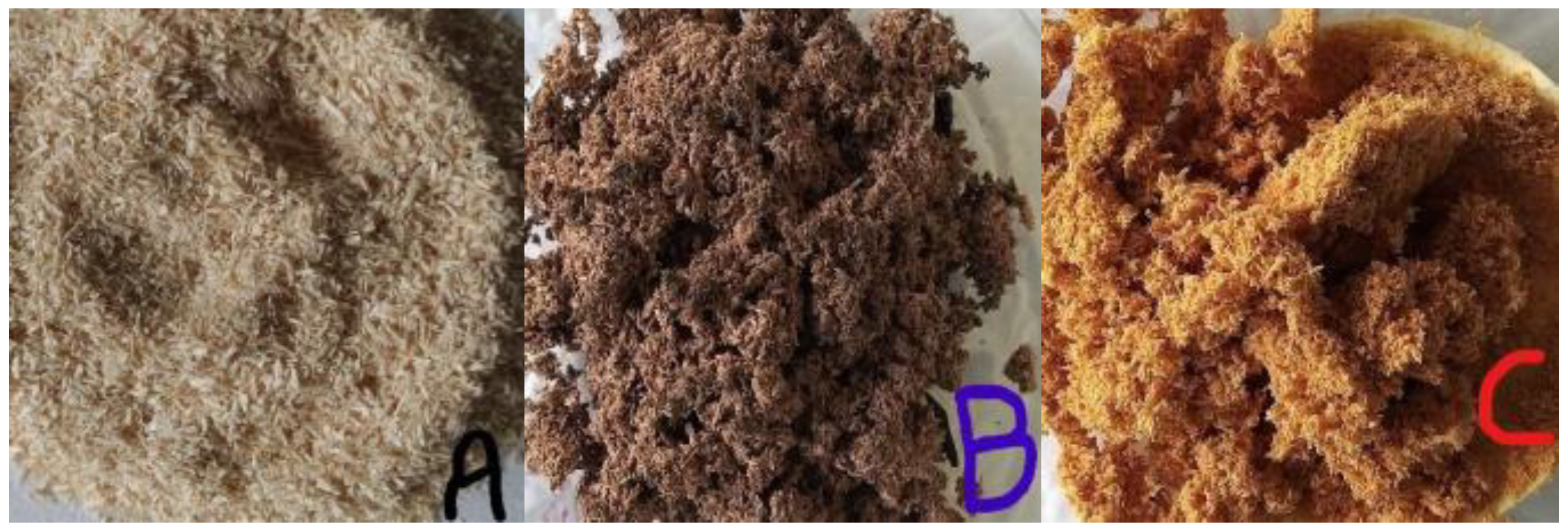Evaluation of Natural Materials as Adsorbents of Probe Molecules †
Author Contributions
Funding
Institutional Review Board Statement
Informed Consent Statement
Data Availability Statement
Conflicts of Interest
References
- Tchikuala, E.F.; Mourão, P.A.M.; Nabais, J.M.V. Activated carbons from angolan wood wastes for the adsorption of MCPA pesticide. In WASTES—Solutions, Treatments and Opportunities II; CRC Press: Boca Raton, FL, USA, 2017; p. 311. [Google Scholar]
- Gomes, J.A.F.L.; Azaruja, B.A.; Mourão, P.A.M. From MDF and PB wastes to adsorbents for the removal of pollutants. Appl. Surf. Sci. 2016, 380, 119. [Google Scholar] [CrossRef]
- Carrott, P.J.M.; Mourão, P.A.M.; Ribeiro Carrott, M.M.L.; Gonçalves, E.M. Separating surface and solvent effects and the notion of critical adsorption energy in the adsorption of phenolic compounds by activated carbons. Langmuir 2005, 21, 11863. [Google Scholar] [CrossRef] [PubMed]

Publisher’s Note: MDPI stays neutral with regard to jurisdictional claims in published maps and institutional affiliations. |
© 2022 by the authors. Licensee MDPI, Basel, Switzerland. This article is an open access article distributed under the terms and conditions of the Creative Commons Attribution (CC BY) license (https://creativecommons.org/licenses/by/4.0/).
Share and Cite
Cassavela, C.; Mourão, P. Evaluation of Natural Materials as Adsorbents of Probe Molecules. Mater. Proc. 2022, 8, 132. https://doi.org/10.3390/materproc2022008132
Cassavela C, Mourão P. Evaluation of Natural Materials as Adsorbents of Probe Molecules. Materials Proceedings. 2022; 8(1):132. https://doi.org/10.3390/materproc2022008132
Chicago/Turabian StyleCassavela, Cláudio, and Paulo Mourão. 2022. "Evaluation of Natural Materials as Adsorbents of Probe Molecules" Materials Proceedings 8, no. 1: 132. https://doi.org/10.3390/materproc2022008132
APA StyleCassavela, C., & Mourão, P. (2022). Evaluation of Natural Materials as Adsorbents of Probe Molecules. Materials Proceedings, 8(1), 132. https://doi.org/10.3390/materproc2022008132






